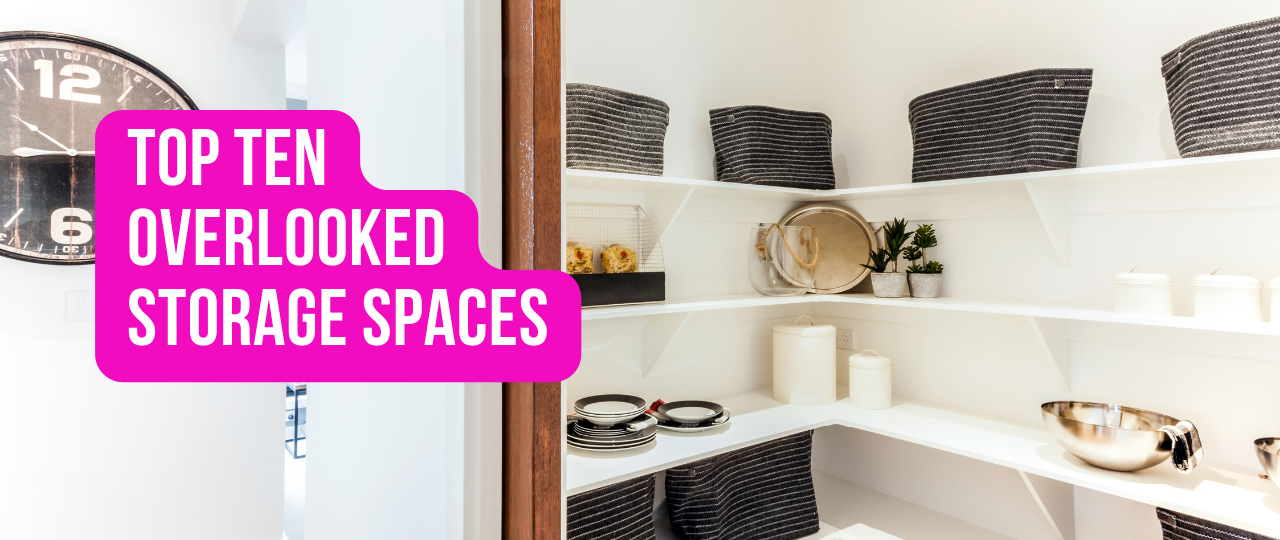We all need storage. Sadly, most often it happens without a plan. We stash something where there's an empty spot, then pile something else on top of it, and so on, until one day we've forgotten where we put any of it. And, in the meantime, the pile has grown big enough to cause problems of its own.
One reason we create such visible messes with our haphazard, unplanned storage habits is that we fail to consider the large, and largely empty, spaces that exist around the house. The first step in planned storage, therefore, is to inventory the potential storage spaces that surround you. Let's start at the top.
1. Attics
Many people have no idea what their attic looks like, nor even how to get into it. If you have a flat roof, chances are you don’t have an attic. But beneath most sloped roofs is a big, largely empty space that, with a little attention, can serve as a major storage depot.
Unfinished attics are typically outside of the thermal envelope wrapping a house. That means they are going to reflect the temperature outside rather than inside, so you need to think carefully about what you store up there.
2. Walls
Short of beds, couches, recliners and other big, heavy pieces of furniture, there is almost nothing else that can’t be stored on the wall. Wall-hung bookcase units have been around for many years, but there has been an increasing trend toward hanging shelf and cabinet units for use in the kitchen, in closets, in home offices and media rooms.
Wall-hung storage units are so versatile and easy to install that you might find that they can easily replace a host of furniture pieces. One additional benefit is that they keep the floors clear.
3. Closets
I know what you’re saying: "Nobody 'overlooks' closets for storage." True, most closets certainly are used for storage. Too often, however, they are also full of empty space (such as that big gap between hanging pants and the shoes on the floor) or a big pile of, well, who actually knows what’s in there?
A closet makeover is easy, inexpensive and often one of the most effective storage chores you can do around the house.
4. Pantries
Pantries were once a standard feature of new houses, then they faded as modern house styles replaced traditional designs. But it's hard to keep a good idea down, and pantries are a very good idea that has been enjoying something of a comeback.
Though kitchen uses and cooking habits seem to vary widely from one household to another, just about everyone benefits from having a nicely organized space to store large, little used and/or unopened goods. A separate room is nice, but when that is not an option it is still possible to dedicate a specific zone of the kitchen as your pantry.
5. Laundry
Laundry room storage frequently consists of some detergent, bleach and fabric softener sitting on top of the washer or dryer. A well-organized space can function as both a better place to do the laundry, with room to fold and hang clothes, and a pantry of sorts for household goods that aren’t going to be used in a meal.
6. Basements
We don't all have a basement. Some houses are built on slabs or crawl spaces, but those who have that big open space below are sitting on a storage gold mine. The biggest problem with many basements is moisture. Once that is dealt with, the next big issue is figuring out how to organize the basement for safe and efficient storage that also allows for all of the other activities that you want to use it for.
7. Entries & Mudrooms
These are spaces we walk through every day, and yet they are often overlooked as ideal storage spaces for the kinds of things we wear or use outdoors (coats, boots, basketballs) but store indoors. Well organized entries and mudrooms also help keep the house clean by keeping dirty footwear from getting too far inside the door.
8. Garages
Garages are built first and foremost to house vehicles. There are times, however, when it seems a little foolish to give over such a large, protected space to cars, which, after all, are built to withstand the elements at their harshest.
But whether of not you wish to share your garage with the vehicles in your life, there are many ways to create terrific storage spaces that can simplify your life. With so much empty wall and ceiling space, the options are almost unlimited.
9. Sheds
Sheds are often storage of the “last resort” variety, built or bought when the cars have pushed the lawn mower and bicycles out of the garage or when the backyard has blossomed with an abundance of kid’s playthings. But sheds can be much more than utilitarian boxes; they can be attractive additions to your landscape that add new opportunities for your work and hobby activities.
The best sheds are custom built to a design that suits your specific needs. Any decent carpenter can build one quickly, for a decent price. But if you have some construction skills yourself, or simply a desire to learn a few new tricks, a shed is a great DIY project.
10. Temporary Storage Units
When you need some additional storage space for a short period of time, rental storage units really come in handy. Offsite storage units can hold the belongings of a full household between moves. You can also rent containers that are delivered to your home to store stuff you want to have access to while, for example, part of your house is being remodeled. PODS and Smartbox are two sources of portable, temporary storage units.




















